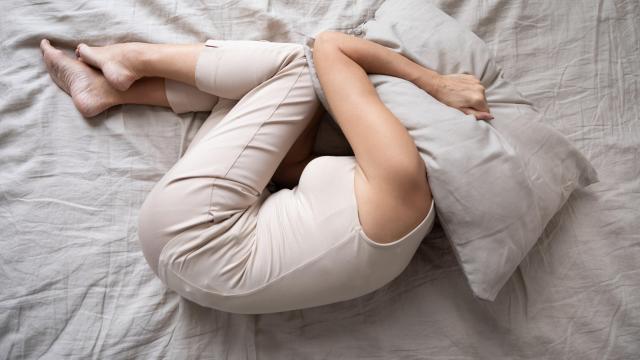The lingering pandemic, rising crime, an uncertain economy: All good reasons to visit your doctor to get screened for anxiety, or so says the federal government. The advice isn’t just aimed at people already experiencing mental health issues — this week, the U.S. Preventive Services Task Force, an advisory group empaneled by the Department of Health and Human Services, issued a recommendation that all Americans under the age of 65 get screened for anxiety. (That’s probably a normal and fine thing for a government to recommend, right?)
Part of the task force’s purpose is to uncover hidden or underreported mental health disorders so they do not go untreated, and one of its primary findings is that, unsurprisingly, the upheaval of the last few years has a lot of people feeling anxious. As noted, the board cites inflation. crime rates, fear of illness, and loss of loved ones from COVID-19 as potential reasons you might be anxious, but feel free to add global warming, the creep of fascism, and the continuing existence of spiders to the list if you like. Whatever the cause, the percentage of adults reporting recent symptoms of an anxiety or depressive disorder rose from 36.4% to 41.5% between August 2020 and February 2021, according to research the group cited.
Here’s what you need to know about getting screened for anxiety.
How does a screening for anxiety disorder work?
It’s not mandatory, but physicians all over the country are expected to begin prioritising anxiety screenings in response to the panel’s advice, so if you make an appointment for a checkup, your doctor will probably be ready to do the initial screening. This will usually take the form of a questionnaire that your physician will use to pick up on signs you may have an anxiety disorder. From there, you may be referred to a mental health specialist to complete the diagnosis, or be told that you don’t show symptoms of the disorder.
If you are ultimately found to have an anxiety disorder, things get a little murky. The standard treatment is therapy and/or medication, which have been shown to be effective for most people after only a few months — but whether you’ll have access to the level of treatment you need is anything but guaranteed. As Dr. Jeffrey Staab, a psychiatrist and chair of the department of psychiatry and psychology at Mayo Clinic (not a member of the task force), points out to the New York Times, the U.S. is short on mental health professionals at all levels, and a screening program won’t be very useful if it doesn’t lead to treatment for the people who need it.
That’s not the only potential pitfall. “Wen providers say, ‘You must have a disorder, here, take this,’ we could face an overprescribing problem,” Staab says. “But the opposite scenario is that we have lots of people suffering who shouldn’t be. Both outcomes are possible.”
Why an anxiety screening can help fight systemic racism
According to task force member Lori Pbert, a clinical psychologist and professor at the University of Massachusetts Chan Medical School, another potential benefit of mass-screenings for anxiety disorders is combating racism, implicit bias, and other systemic health care equality issues. Screening everyone — rather than simply those who look like they might fit the typical image of an anxiety patient — could ultimately lead to more equitable distribution of mental health resources. To a degree, anyway: Distribution of treatment and resources is still likely to favour those likely to actually have a primary care physician they visit on the regular.
What about people over 65?
The task force did not recommend anxiety screenings for people over the age of 65 because, “anxiety symptoms are similar to normal signs of ageing, such as fatigue and generalized pain.” This suggests to me that we should develop better testing for anxiety so we can ensure older people aren’t needlessly suffering from it, but I’m no medical researcher.

Leave a Reply
You must be logged in to post a comment.